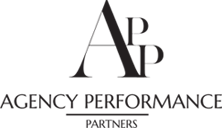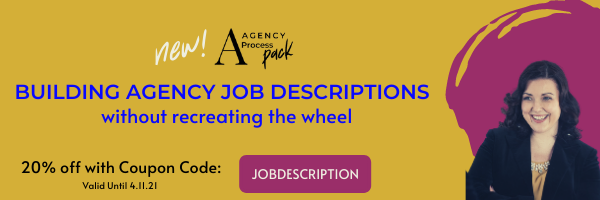One thing that most agency owners share is that we all like growth, right? Talk to any agency executive – it’s all about the growth!
But another commonality is that because most of us are entrepreneurial in nature, we generally dislike some of the disciplines and details that help us attain growth. Take creating job descriptions, for example. If there’s one thing that Agency Performance Partners (APP) has learned while working with hundreds of agencies throughout the country, it is that creating job descriptions is among the most detested and procrastinated tasks of all.
Job descriptions are vital building blocks that contribute to the growth and success of any insurance agency — they should be a top priority!
What makes creating agency job descriptions one of the most dreaded duties that agency executives face? Executives tell us that writing them can feel burdensome and needlessly administrative. Some agency executives say they just aren’t good at writing them, some say they just don’t know where to start, and others say that despite good intentions, job descriptions keep falling to the bottom of their to-do list because there is always something more important to do.
Whatever the reason, they just don’t seem to get done!
Maybe part of the reason they get overlooked so often is because many of us didn’t start with a good job description ourselves. Many of us work in family-run agencies that evolved over time. Our own job descriptions encompassed pretty much everything from selling and servicing policies, to answering phones and fixing the coffee maker in the kitchen. Did something need to be done? Then it was in our job description!
But as our agencies grow and evolve, it’s important to put more discipline in the process. Love them or loathe them, job descriptions are quite important to your insurance agency’s mission.
Take a few minutes to learn:
- Why we think job descriptions tailored to your insurance agency are so important.
- How to create job descriptions and what you should include.
- How to use job descriptions to motivate your employees and measure your staff performance.
- How you can make writing job descriptions fun by using affordable tools and templates that APP provides to make the whole process much easier!
Why Insurance Agency Job Descriptions Are Vital
Job descriptions are so important that we’d like to open you up to a new way of thinking: Think of creating job descriptions as laying the foundation for your insurance agency’s growth and success, much like creating a new building requires first building a strong foundation and base. And once that foundation is laid, job descriptions become vital tools for running your agency. They help you manage your existing staff, as well as successfully attract new staff who will be “keepers” in an industry that has a particularly high turnover rate for new hires. They are tools for measuring staff performance on an ongoing basis. When done well, they are critical building blocks for future agency growth.
Here are ways that solid job descriptions benefit your agency:
Recruiting top-tier talent. Your insurance agency’s job descriptions are the cornerstone in recruiting. If you want to attract qualified candidates, you need to start with a clear and compelling job description, which will:
- Help you hire the right people for the right jobs by outlining minimum requirements, competencies, licensure, essential duties, and other necessary requirements and skills.
- Provide an accurate snapshot of the position so that candidates can better self-select.
- Reinforce your agency’s mission, goals, and values so that candidates get an early introduction into your agency’s culture and can determine if it will be the right fit.
- Help you to screen out unqualified candidates.
- Jump-start your onboarding process by introducing prospective hires to their roles and responsibilities.
Benchmarking performance. Solid insurance agency job descriptions also provide a benchmark to measure, maximize, and improve employee performance. Establishing clear standards is vital for accountability and for accurately and consistently measuring employee performance. They provide a structure for you to give meaningful feedback that will help an employee meet their full potential. You worked hard to recruit the best employees and it’s equally important to retain them. Measuring and providing feedback on key performance indicators helps employees achieve agency and team goals, and grow professionally. Job descriptions will:
- Serve as a benchmark for holding employees accountable and measuring performance to determine pay increases, bonus eligibility, and potential for career advancement and promotions.
- Be a tool for giving performance feedback and helping develop potential.
- Set clear expectations and establish metrics that can be used to improve performance.
- Offer an accountability yardstick that measures growth in achieving goals.
- Serve as a tool to help employees create the right customer experience.
- Help employees prioritize their time and efforts.
Providing a solid agency foundation. Within your insurance agency, job descriptions are not only important for clearly delineating the specific roles and functions of each individual position, but they are also important building blocks in your agency’s overall organizational chart. Think of them as building the foundation to keep your agency on track. As your insurance agency grows, you may need to modify or add to the bank of job descriptions you build to encompass specialists. Job descriptions help to:
- Keep you and your management team on the same track for goals and people management.
- Define agency workflow and map out processes.
- Reduce misunderstanding of role responsibilities and potential conflict between staff.
- Create new, specialized roles as your agency grows. Ex: Hiring a claims specialist.
Reducing potential liability. Good job descriptions can help ensure regulatory compliance and reduce potential liability in areas such as job discrimination and wrongful termination. They can help ensure fairness and consistency. Insurance agency job descriptions should:
- Comply with state and federal laws such as Fair Labor Standards Act and Americans With Disabilities Act (ADA) for physical requirements of the job.
- Clarify whether an employee is exempt or non-exempt from overtime requirements.
- Provide a basis for performance tracking any problems and defending any terminations.
Creating Effective Insurance Agency Job Descriptions
Job descriptions should include certain key components, including a description of responsibilities, requirements, qualifications, and reporting relationships. A job description should also specify any competencies, skills, or qualifications for the job, such as whether insurance licensure is required. If there are physical requirements for a job, those should also be specified.
Insurance agency job descriptions should include:
- Mission of The Role – Provide a short summary of the specific job. The mission should focus on the big picture rather than on executional-level responsibilities. Craft the mission to reflect the key purpose of the job and what it should accomplish.
- Desired Role Outcomes – Specify the desired outcomes for the position. Ultimately, each outcome should tie into the role’s mission. For example, if the mission is to retain and grow the existing book of business, the desired outcome would be hitting a certain retention rate.
- Key Performance Indicators – Delineate how you will track the role, what accountability metrics will be tied to this role, and how and when the indicators will be reviewed.
- Principles of the Agency – Summarize your agency’s core values and operating principles that you expect all agency team members to uphold. These values might include such things as “putting the team before the individual” and “being the most responsive agency in New York.” The principles should help guide them in their daily work and decision making.
- Critical Competencies – List the critical competencies and standards they will be measured on in their role. Some examples include client responsiveness, decision making, organization and planning, communication and listening skills, proactivity, persistence, enthusiasm, teamwork, and collaboration.
- Feedback Schedule – Delineate when and how formal reviews will be conducted, and at what intervals. List what informal feedback mechanisms will be available, from weekly check-ins and team meetings to situational consultation and mentoring sessions.
By its very nature, a job description will be limited in scope, but it can serve as the foundational document in your onboarding process. For new hires, you may want to expand on each section with a greater level of detail or specificity than you may need in the hiring process.
As you build your insurance agency’s job descriptions, consider having a discussion with your attorney or an employment law expert to ensure that you are compliant with federal, state, and local laws. You might even want to have a sampling of your job descriptions reviewed so that you understand the parameters.
How to Use Insurance Agency Job Descriptions
One of the big mistakes that people make with job descriptions is that they use them in the hiring process, but then put them on the shelf until it’s time to hire another staff member. As a key component and building block in your growth plans, job descriptions should be living, breathing documents that are put to good use. Here are some of the ways to do that:
Share and be transparent: Once you’ve developed your job descriptions, create an organizational chart that depicts reporting relationships. You want to keep this visible and not just as part of an employee handbook. Review it and refer to it at team meetings. Share and review it when it is updated. Keep a framed copy in the break room or the conference room. It’s a good reminder of how and where everyone fits in the organization and is a part of achieving your agency’s overall goals.
Make job descriptions transparent and available to everyone. Keep a set of updated job descriptions in place where they can be reviewed – such as in a shared electronic key documents file. You can highlight their importance by emailing an updated copy of each individual job description to respective employees each year. Attach a brief note emphasizing how their role is critical to overall agency success and thanking them for being an important member of your team.
Review job descriptions with the team: Whether you already have a good set of custom job descriptions for your agency, or you are just embarking on developing your own custom descriptions, you want to find time to talk about them with your team. It can be a motivating and positive exercise to introduce and discuss them at a meeting with your staff. Having such a discussion is a good springboard for talking about your agency mission, values, goals, and growth plan. Explain how job descriptions are part of the map that help chart the path to growth and success.
While you want this discussion to be an overview and high-level introduction, you might want to drill down a bit to highlight examples of the importance of each person’s role in that mission. You can talk about the different roles that people play and how those roles contribute to your agency’s success. Talk about the purpose of job descriptions in measuring key performance indicators and outcomes both for individuals and the agency as a whole.
Onboarding new hires: Of course, job descriptions are also important in the onboarding process for any new hires. They offer an opportunity for you or the new employee’s supervisor to clarify the role, the priorities, and how the new person fits into the overall agency mission.
You should also be explicit about how and when each new employee’s performance will be measured. Explain what help and support will be available to help them reach their goals. Your job descriptions should focus on outcomes with clear metrics so that employees understand expectations and have concrete goals. Focusing on measurable outcomes will make periodic check-ins and scheduled performance evaluations much easier for both you and the employee. There should be no surprises.
Modifying descriptions on a regular basis: Just as you review and adapt your annual agency goals each year, make reviewing job descriptions part of that discipline to ensure that they reflect these changes. Use annual employee performance indicator reviews not just as an employee touchpoint, but as an opportunity to evaluate and update each job description to ensure it reflects changes in agency goals and plans. As goals are achieved, metrics can be adjusted.
How to Create Insurance Agency Job Descriptions — the easy way
If everything we’ve talked about with job descriptions sounds complicated and a little bit difficult – well, in fact, it can be – particularly if you start from scratch. That’s why the task of creating custom insurance agency job descriptions for every role in the agency is something so many executives put off.
But there is an easier way – Agency Performance Partners has you covered!
Our Agency Process Pack — Building Insurance Agency Job Descriptions For Every Role In Your Agency — has templates, videos, and the sample job descriptions your agency needs to have clear roles and responsibilities. Get started with best-in-class templates that allow you to simply polish them up and tailor the job descriptions for your agency.
What’s included in Building Insurance Agency Job Descriptions For Every Role In Your Agency
- Mini E-course with best practices.
- Workbook on how to build great job descriptions.
- 12 Common Agency Job Description Templates.
- 2 hours of short, 5-minute videos for each agency role.
- Word document processes that you can tailor for your agency.
- Supplemental templates for each process.
- How to launch the job descriptions with your team to maximize buy-in.
Check out our other Agency Process Packs!





